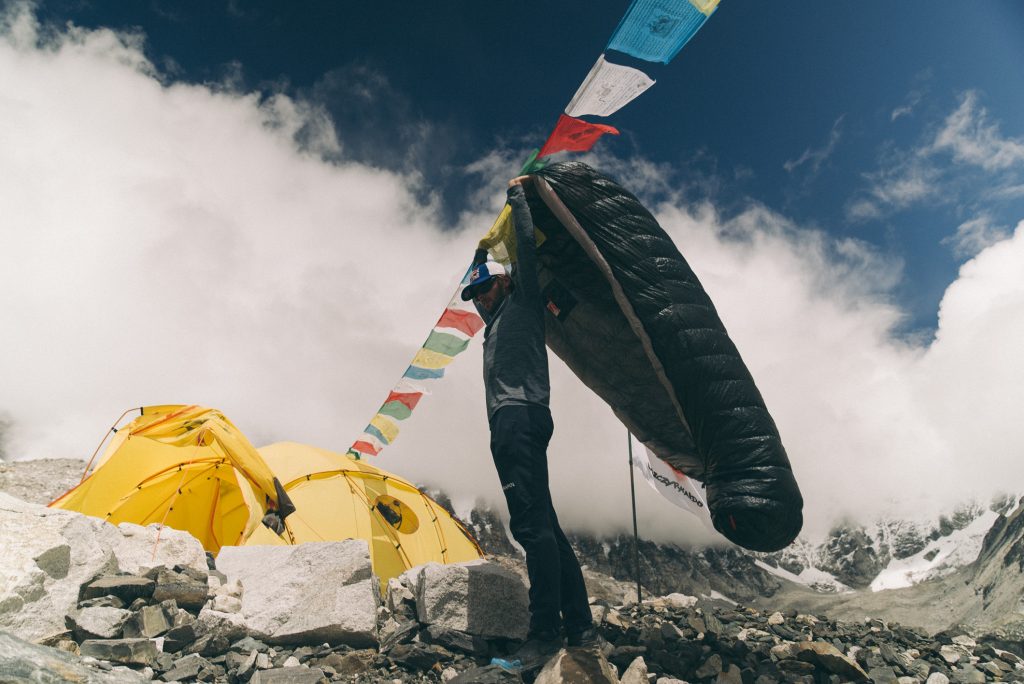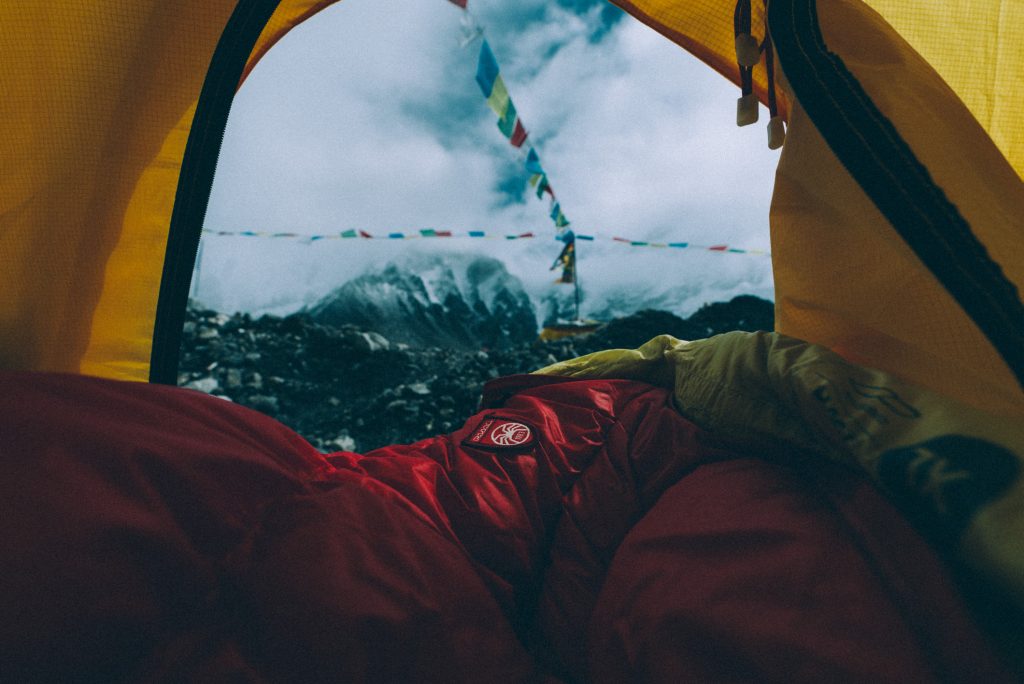
HOW TO PROTECT A DOWN SLEEPING BAG FROM GETTING WET WHEN SLEEPING OUTDOORS?
Down sleeping bags have super heating properties. However, some people believe that they are very difficult to care for.Some outdoor enthusiasts think that a soaked down sleeping bag will never dry out, so taking it on longer trips is unreasonable. Funnily enough, it is quite the opposite - in fact, you do not have to make a special effort to dry a well-designed sleeping bag filled with natural down. The laws of physics suffice to explain it.
WHAT WILL YOU LEARN FROM THIS DESCRIPTION?
- How to protect a down sleeping bag from getting wet?
- What to choose for a night outdoors – a down sleeping bag or a synthetic one?
- What is the Pajak’s patent for the protection of down sleeping bag?
IN A NUTSHELL
Most outdoor enthusiasts panic about getting their down sleeping bag wet. In fact, there is no reason to be alarmed - good quality down sleeping bags with the proper construction dry itself quickly. Just go inside and let the moisture evaporate. In conditions of high humidity, you can use the second outer sleeping bag with a synthetic filling that will move the dew point and prevent condensation inside the down layer.

THE SECRET OF WET DOWN
It is not surprising that we're afraid of getting our down sleeping bag wet. Down sleeping bags are quite expensive, and no wonder an average amateur of sleeping in the open air is terrified at the thought of destroying it during the first expedition. The thing is that soaked and lumpy down is theoretically very difficult to dry, and what is more, the moisture filling the spaces between delicate feathers is a great conductor of coolness! It works in a different way than the air being heated by your body, which should normally fill the spaces inside the insulation. It is the air that insulates the sleeping bag effectively from the cold. On top of that there is a risk that it will not dry out completely, and eventually mould will appear. If this is your way of thinking, it may be better to leave your sleeping bag at home and do not go out at all...
GOOD SLEEPING BAG EQUALS DRY SLEEPING BAG
You have nothing to worry about as long as your sleeping bag is properly constructed. At the beginning we have to say that a good sleeping bag does not protect you from getting wet, because it would block the evaporation of sweat from your skin at the same time. And it is the condensation called ‘a dew point’, that is the real problem for sleeping bags. Therefore, paradoxically, your sleeping bag will sooner get wet in a tent, where a specific microclimate is created and the level of condensation is very high, than for example in a hammock under a tarp tent.
If the sleeping bag is made of breathable fabric, you just need to get inside it and after about 20 minutes the moisture simply evaporates under the influence of your body temperature. Natural down recovers its loft as it dries out, so you will be able to see it with the naked eye that the inside of your sleeping bag is drying out.

POTENTIAL PROBLEMS WITH DRYING OUT
Water-resistant products are really problematic in the long run. It would be more difficult and less pleasant to sleep in a sleeping bag fitted with a membrane or external coating that blocks the evaporation of accumulated moisture from your own body. It is fine on short trips, when you know there won’t be any place to dry it. Then the sleeping bag won’t have time to collect the moisture from the environment. Instead, it will absorb your sweat.
DO YOU HAVE TO PROTECT THE SLEEPING BAG FROM GETTING WET?
A breathable sleeping bag without membranes or waterproof coating has a chance to provide you the highest thermal properties during long expeditions. In order to protect it from damage, and give yourself good thermal protection you can use a patent that Pajak developed at the beginning of this century for military special forces. Today it is also used by Himalayan and polar explorers. Their down sleeping bags with super-elastic natural filling have no membrane. However, they put a second sleeping bag on it. The other one is thin and synthetic insulated. This way, the before mentioned ‘dew point’ appears in the outer sleeping bag and the down sleeping bag can dry freely. You don't have to use a very expensive synthetic sleeping bag as a cover for the down one. From time to time you can simply buy a new one. This is a very practical and light solution and it works well in almost all conditions. And it does not have to take up much space in the backpack!

NOT ONLY AT NIGHT
It is worth remembering to secure the sleeping bag not only during the night, but also during the trekking tour. Don’t even dream about a dry and warm night when your backpack and sleeping bag are wet. If there is a chance of rain or your luggage can fall into a stream, river or lake (whoever survived a canoeing trip when the canoe turned over knows what I’m talking about) you should put the sleeping bag into a waterproof cover before packing it into your backpack.
Don't forget that the protection of your down sleeping bag should start at home! The most important thing is how you store it between trips. Make sure that this fluffy product is not stuck somewhere at the bottom of your closet. The best way to store a sleeping bag is to hang it up on a hook in a dry closet, as it may otherwise get deformed. Pajak sleeping bags are fitted with special straps for hanging. If you can't hang it safely without risking close encounter of cat’s scratch (more than half of all sleeping bags being repaired are damaged by cats), children's scissors or other ‘deadly' tools, keep it in a large mesh bag. This way your sleeping bag won't lose its loft and will protect you from the night chill even on the most difficult expedition, so you can recover before another challenging day.
photos: www.giepe.tv